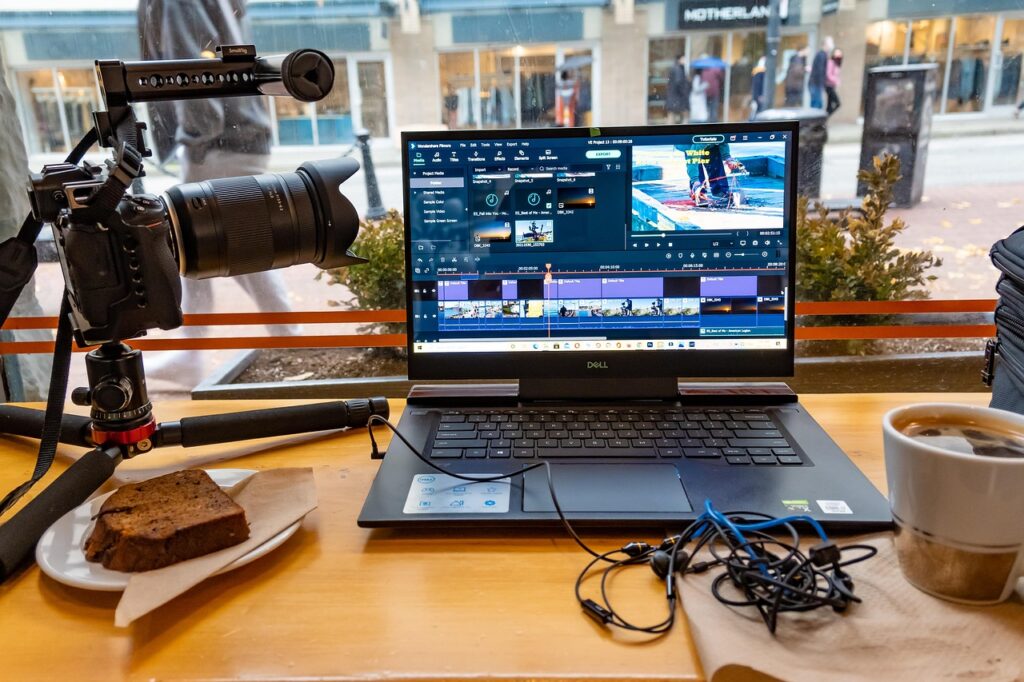A social media video editor is one of the most in-demand creative professionals in today’s digital landscape. With every brand, influencer, and business relying on video to communicate, the demand for skilled editors who can craft visually appealing, emotionally engaging, and platform-optimized videos has skyrocketed. Whether you want to work with top creators, build your own agency, or freelance for global brands, learning how to become a professional social media video editor in 2025 can open up incredible opportunities.
Understanding the Role of a Social Media Video Editor
A social media video editor isn’t just someone who trims clips and adds transitions. Their job is to tell stories that align with a brand’s message and audience preferences. They understand trends, color grading, pacing, sound design, and platform-specific algorithms. For instance, a video for TikTok requires quick cuts and catchy music, while a YouTube vlog needs emotional pacing and audience retention strategies. The best editors know how to make content feel native to each platform while maintaining high quality and consistency.
Step 1: Learn the Fundamentals of Video Editing
Before mastering social media formats, you need a strong foundation in video editing. Start by learning tools like CapCut, Adobe Premiere Pro, DaVinci Resolve, or Final Cut Pro. Understand the basics of trimming, transitions, keyframes, and sound synchronization. Learn about story structure, rhythm, and visual balance — because even a simple 15-second clip can lose impact without flow and intent. Online platforms like YouTube, Skillshare, and Coursera have countless tutorials to help you build your fundamentals.
Step 2: Study Social Media Platforms and Trends
Each social platform rewards different types of content. As a social media video editor, your job is to adapt your editing style accordingly. TikTok favors fast-paced, energetic cuts and on-trend music. Instagram Reels focus on aesthetics and catchy transitions, while YouTube thrives on storytelling and long-form engagement. Stay updated with editing trends, viral sounds, and new platform features. Following top creators can help you learn what’s currently performing well and why.
Step 3: Practice Consistently and Build a Portfolio
No one becomes a professional overnight — practice is key. Start by editing videos for your own social accounts or friends’ brands. Experiment with product promos, behind-the-scenes videos, reels, and short-form clips. Save every completed project to build a portfolio. Over time, your collection of edited content will show clients or employers your range, style, and ability to adapt to various niches. Platforms like Behance, Vimeo, and Instagram can serve as excellent showcases for your portfolio.
Step 4: Develop Your Creative Signature
Every successful social media video editor has a unique editing style. Some focus on cinematic looks, others on trendy, snappy transitions. Discover your niche by experimenting with different aesthetics, sound effects, and pacing techniques. Creativity comes from finding balance — making your edits recognizable while staying adaptable to client needs. Over time, your personal editing signature can become your biggest selling point in a crowded market.
Step 5: Learn the Basics of Branding and Marketing
To stand out as a professional, you need to understand branding. Learn how to integrate a brand’s identity into videos — from color palettes to fonts, tone, and music style. The best editors can translate brand values visually without needing constant direction. Understanding marketing basics also helps you edit with purpose: every cut should drive engagement, retention, or conversion.
Step 6: Master Speed and Efficiency
Social media moves fast — brands and creators often need content daily. A professional social media video editor must be fast without compromising quality. Learn keyboard shortcuts, organize your assets, and create templates for recurring projects. Tools like CapCut Pro, Premiere Pro presets, and AI automation can help speed up your workflow. The more efficient you become, the more projects you can handle, which directly increases your earning potential.
Step 7: Build an Online Presence and Network
Once you’ve built your skills and portfolio, start showcasing your work online. Create a professional Instagram or LinkedIn page that highlights your best edits. Engage with other editors, marketers, and creators — collaboration often leads to long-term opportunities. You can also join freelancer platforms like Upwork, Fiverr, or Toptal, where brands are actively searching for skilled social media video editors. Networking is just as crucial as skill — people hire those they trust and recognize.
Step 8: Stay Updated with New Tools and AI Features
The editing industry evolves constantly, with AI tools now playing a major role. New apps can automatically remove backgrounds, sync music to motion, or generate subtitles instantly. A modern social media video editor must know how to use these tools effectively without losing the creative touch. Keep experimenting with innovations that enhance your productivity and storytelling ability.
Step 9: Understand Analytics and Audience Behavior
Editing doesn’t end when you export the video — it’s also about performance. Learn how to analyze engagement metrics to see what works best. Track watch time, drop-off points, and conversion rates to refine your editing strategy. Understanding audience psychology helps you make smarter creative decisions that drive real results.
Step 10: Turn Your Skill into a Business
Once you’ve developed consistency, consider turning your skills into a business. You can start freelancing, offer video editing services to agencies, or build your own personal brand. As your demand grows, you can scale by hiring a small team or offering monthly editing packages for brands and creators. In 2025, a professional social media video editor can easily build a six-figure business with the right mix of skill, speed, and branding.
Final Thoughts
Becoming a professional social media video editor takes dedication, creativity, and constant learning. The digital world rewards those who can adapt quickly and deliver visually powerful stories. Whether you dream of editing for big brands or running your own creative studio, the journey starts with passion and practice. Keep learning, stay creative, and remember — in the world of social media, your edits are what make moments go viral.



